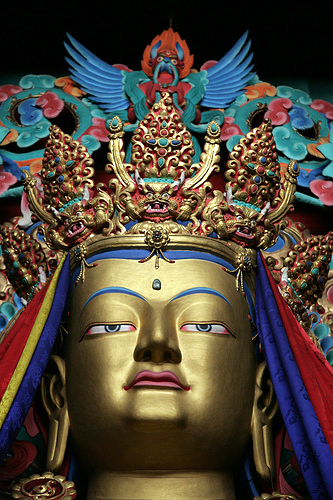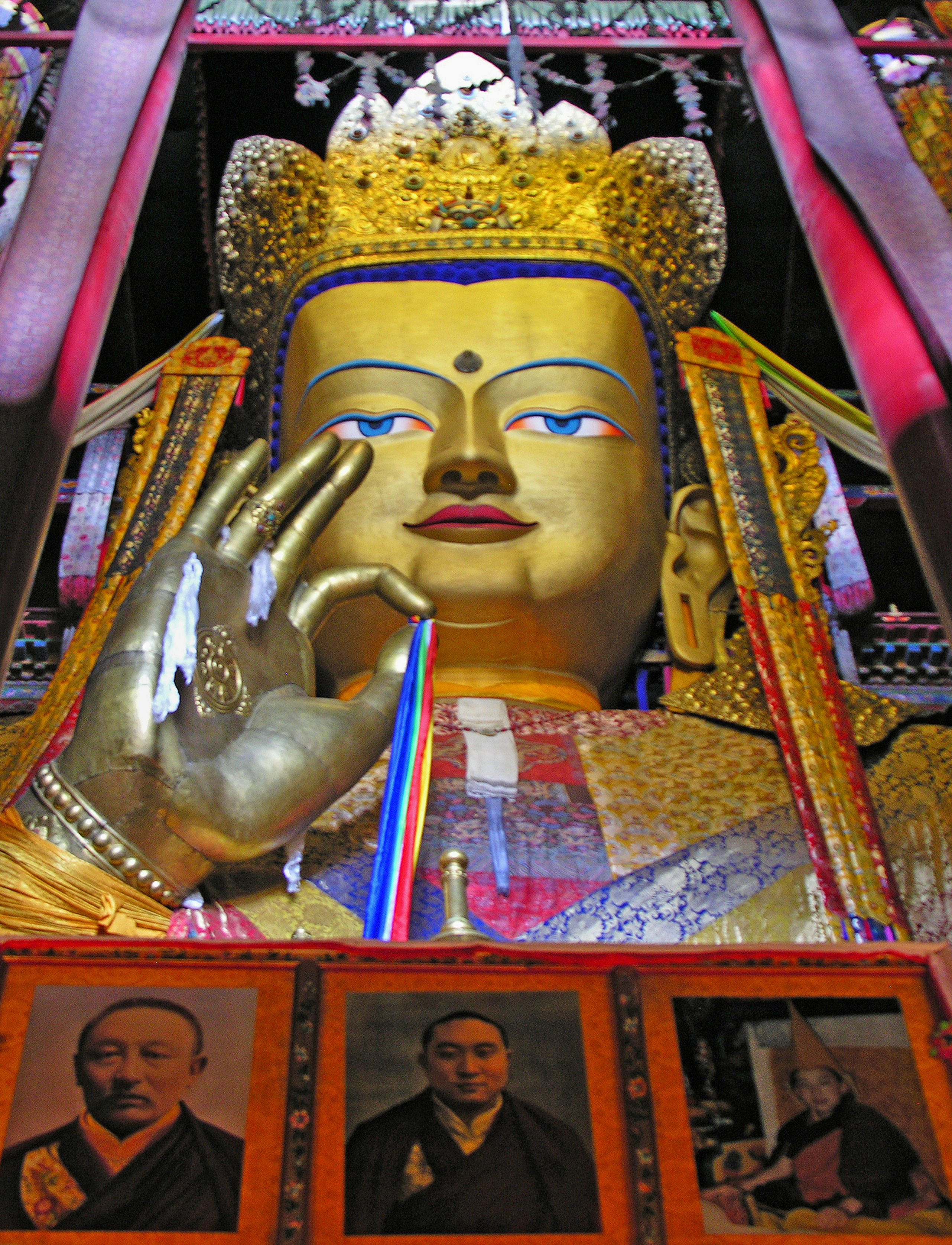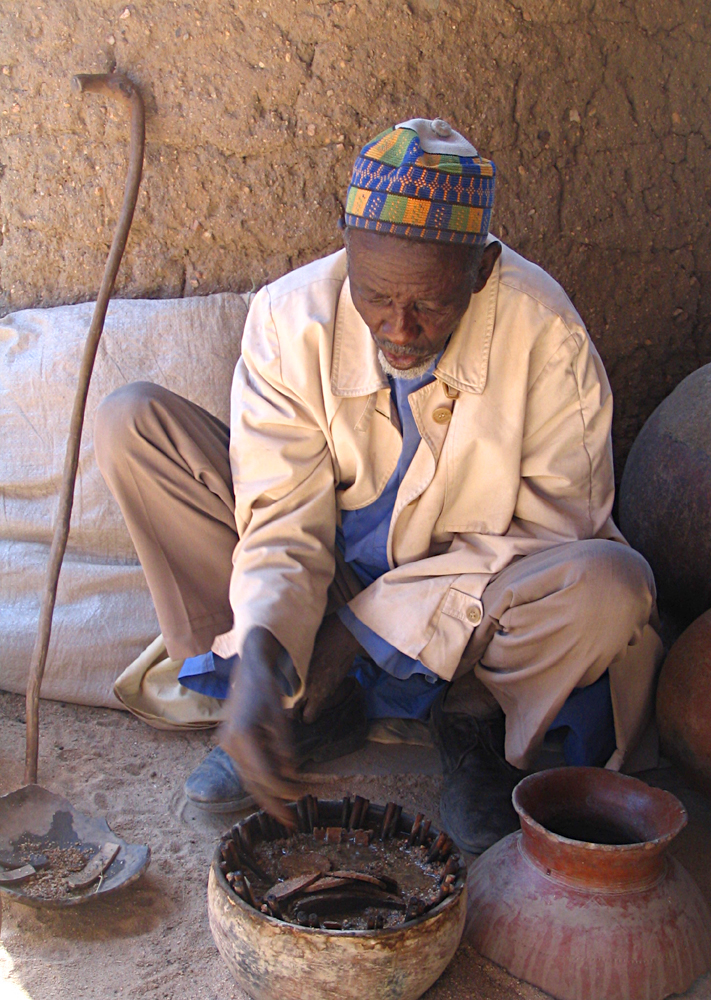|
Bonpos
Bon or Bön (), also known as Yungdrung Bon (, ), is the indigenous Tibetan religion which shares many similarities and influences with Tibetan Buddhism.Samuel 2012, pp. 220–221. It initially developed in the tenth and eleventh centuries but retains elements from earlier Tibetan religious traditions.Kvaerne 1996, pp. 9–10. Bon is a significant minority religion in Tibet, especially in the east, as well as in the surrounding Himalayan regions. The relationship between Bon and Tibetan Buddhism has been a subject of debate. According to the modern scholar Geoffrey Samuel, while Bon is "essentially a variant of Tibetan Buddhism" with many resemblances to Nyingma, it also preserves some genuinely ancient pre-Buddhist elements. David Snellgrove likewise sees Bon as a form of Buddhism, albeit a heterodox kind.Powers 2007, pp. 500–501 Similarly, John Powers writes that "historical evidence indicates that Bön only developed as a self-conscious religious system under the infl ... [...More Info...] [...Related Items...] OR: [Wikipedia] [Google] [Baidu] |
Zhangzhung
Zhangzhung or Shangshung was an ancient kingdom in western and northwestern Tibet, existing from about 500 BCE to 625 CE, pre-dating Tibetan Buddhism. The Zhangzhung culture is associated with the Bon religion, which has influenced the philosophies and practices of Tibetan Buddhism. Zhangzhung people are mentioned frequently in ancient Tibetan texts as the original rulers of today's western Tibet. Only in the last two decades have archaeologists been given access to do field work in the areas once ruled by the Zhangzhung. Extent Tradition has it that Zhangzhung consisted "of three different regions: sGob-ba, the outer; Phug-pa, the inner; and Bar-ba, the middle. The outer is what we might call Western Tibet, from Gilgit in the west to Dangs-ra khyung-rdzong in the east, next to lake gNam-mtsho, and from Khotan in the north to Chu-mig brgyad-cu rtsa-gnyis in the south. Ladakh, including Lahaul and Spiti, was part of sGob-ba. The inner region is said to be sTag-gzig (Tazig) Ba ... [...More Info...] [...Related Items...] OR: [Wikipedia] [Google] [Baidu] |
Religion In Tibet
The main religion in Tibet has been Buddhism since its introduction in the 8th century AD. the historical region of Tibet (the areas inhabited by ethnic Tibetans) mostly comprises the Tibet Autonomous Region (TAR) of China and partly the Chinese provinces of Qinghai, Sichuan, Gansu, and Yunnan. Before the arrival of Buddhism, the main religion among Tibetans was an indigenous shamanism, shamanic and animism, animistic religion, Bon, which would later influence the formation of Tibetan Buddhism and still attracts the allegiance of a sizeable minority of Tibetans. According to estimates from the International Religious Freedom Report of 2012, most Tibetans (who comprise 91% of the population of the Tibet Autonomous Region) are associated with Tibetan Buddhism, while a minority of 400,000 people (12.5% of the total population of the TAR) profess the native Bon religion. Other groups in Tibet practise folk religions which share the image of Confucius (Tibetic languages, Tibetan: ''K ... [...More Info...] [...Related Items...] OR: [Wikipedia] [Google] [Baidu] |
Tonpa Shenrab
Tonpa Shenrab (, ), also known as Shenrab Miwo (), Buddhahood, Buddha Shenrab, Guru Shenrab and a number of other titles, is the legendary founder of the Bon religious tradition of Tibet. The story of Tonpa Shenrab was revealed in a fourteenth century Terma (religion), terma of Loden Nyingpo. Existence Etymology The name ''Shenrab Miwo'' is in the Zhang-Zhung language, which is a relative of Old Tibetan; while many suggestions have been put forward as to its meaning, it appears to be the Zhangzhung word "bodhisattva" (equivalent to Tibetan ''shégya sempa'', ). Shenrab's life according to Bon traditions According to Bon doctrine, Tonpa Shenrab lived 18,000 years ago, predating Gautama Buddha. Practitioners of Bon believe that he first studied the Bon doctrine in Tagzig Olmo Lung Ring, at the end of which he pledged to Shenlha Okar, the god of compassion, that he would guide the peoples of this world to liberation. Like Gautama, Tönpa Shenrab was of royal birth. Tonpa Sh ... [...More Info...] [...Related Items...] OR: [Wikipedia] [Google] [Baidu] |
Nakhi People
The Nakhi, Nashi, or Naxi (; Naxi: ) are a people inhabiting the Hengduan Mountains abutting the Eastern Himalayas in the northwestern part of Yunnan Province, as well as the southwestern part of Sichuan Province in China. The Nakhi are thought to have come originally from northwestern China, migrating south toward Tibetan-populated regions, and usually inhabiting the most fertile riverside land, driving the other competing tribes farther up the hillsides onto less fertile land. The Nakhi traded over the dangerous overland trading links with Lhasa and India, on the so-called tea and horse caravan routes. The Nakhi form one of the 56 ethnic groups officially recognized by the People's Republic of China. The official Chinese government classification includes the Mosuo as part of the Nakhi people. Nakhi culture is largely its own native Dongba religious, literary, and farming practices, influenced by the Confucian roots of Han Chinese history. Especially in the case of the ... [...More Info...] [...Related Items...] OR: [Wikipedia] [Google] [Baidu] |
Dongba
Dongba (Naxi language, Nakhi: ''²dto¹mba'', ) refers to both the religion and the priests of the Nakhi people of southwest China. Role in society ''Dongba'' is believed to have originated from the indigenous Tibetan Bon religion. According to Nakhi legend, these teachings first came to Yunnan from a Bon shaman from eastern Tibet named Dongba Shilo (丁巴什罗). The strong Tibetan influence can be seen today in the rituals and costumes of the Dongba priests, who invoke Bon spirits and are often adorned with pictures of Bon gods on their headgear. Currently, the religion is deeply ingrained in Nakhi culture, with Dongba priests serving as the primary transmitters of traditional Nakhi culture, literature and the pictographic Dongba symbols. The priests also conduct a variety of rituals to propitiate the many gods and spirits which are believed to play an active part in the natural world. The core of the Dongba religion is based on the belief that both man and nature are tw ... [...More Info...] [...Related Items...] OR: [Wikipedia] [Google] [Baidu] |
Universal Religion
Religion is a range of social system, social-cultural systems, including designated religious behaviour, behaviors and practices, morals, beliefs, worldviews, religious text, texts, sanctified places, prophecies, ethics in religion, ethics, or religious organization, organizations, that generally relate humanity to supernatural, transcendence (religion), transcendental, and spirituality, spiritual elements—although there is no scholarly consensus over what precisely constitutes a religion. It is an essentially contested concept. Different religions may or may not contain various elements ranging from the divine, sacredness, faith,Tillich, P. (1957) ''Dynamics of faith''. Harper Perennial; (p. 1). and a supernatural being or beings. The origin of religious belief is an open question, with possible explanations including awareness of individual death, a sense of community, and dreams. Religions have sacred histories, narratives, and mythologies, preserved in oral traditions, sac ... [...More Info...] [...Related Items...] OR: [Wikipedia] [Google] [Baidu] |
Divination
Divination () is the attempt to gain insight into a question or situation by way of an occultic ritual or practice. Using various methods throughout history, diviners ascertain their interpretations of how a should proceed by reading signs, events, or omens, or through alleged contact or interaction with supernatural agencies such as ghost, spirits, gods, god-like-beings or the "will of the universe". Divination can be seen as an attempt to organize what appears to be random so that it provides insight into a problem or issue at hand. Some instruments or practices of divination include Tarot card reading, Tarot-card reading, Runic magic, rune casting, Tasseography, tea-leaf reading, automatic writing, water scrying, and psychedelics like psilocybin mushrooms and DMT. If a distinction is made between divination and fortune-telling, divination has a more formal or ritualistic element and often contains a more social character, usually in a religion, religious context, as se ... [...More Info...] [...Related Items...] OR: [Wikipedia] [Google] [Baidu] |
Imperial Cult
An imperial cult is a form of state religion in which an emperor or a dynasty of emperors (or rulers of another title) are worshipped as demigods or deities. "Cult (religious practice), Cult" here is used to mean "worship", not in the modern pejorative sense. The cult may be one of cult of personality, personality in the case of a newly arisen Euhemerus figure, or one of national identity (e.g., Ancient Egyptian Pharaoh or Empire of Japan) or supranational identity in the case of a multinational state (e.g., History of China#Imperial China, Imperial China, Roman Empire). A ''divine king'' is a monarch who is held in a special religious significance by his subjects, and serves as both head of state and a deity or head religious figure. This system of government combines theocracy with an absolute monarchy. Historical imperial cults Ancient Egypt file:Pharaoh.svg, 200px, Ancient Egyptian pharaohs were worshipped as god-kings. The Ancient Egyptian pharaohs were, throughout ancient ... [...More Info...] [...Related Items...] OR: [Wikipedia] [Google] [Baidu] |
Gnosticism
Gnosticism (from Ancient Greek language, Ancient Greek: , Romanization of Ancient Greek, romanized: ''gnōstikós'', Koine Greek: Help:IPA/Greek, [ɣnostiˈkos], 'having knowledge') is a collection of religious ideas and systems that coalesced in the late 1st century AD among Early Christianity, early Christian sects. These diverse groups emphasized personal spiritual knowledge (''gnosis'') above the Proto-orthodox Christianity, proto-orthodox teachings, traditions, and authority of religious institutions. Generally, in Gnosticism, the Monad (Gnosticism), Monad is the supreme God who emanates divine beings; one, Sophia (Gnosticism), Sophia, creates the flawed demiurge who makes the material world, trapping souls until they regain divine knowledge. Consequently, Gnostics considered material existence flawed or evil, and held the principal element of salvation to be direct knowledge of the hidden divinity, attained via mystical or esoteric insight. Many Gnostic texts deal not in co ... [...More Info...] [...Related Items...] OR: [Wikipedia] [Google] [Baidu] |
Tantras (Buddhism)
Buddhist tantric literature refers to the vast and varied literature of the Vajrayāna (or Mantrayāna) Buddhist traditions. The earliest of these works are a genre of Indian Buddhist tantric scriptures, variously named Tantras, Sūtras and Kalpas, which were composed from the 7th century CE onwards. They are followed by later tantric commentaries (called pañjikās and ṭīkās), original compositions by Vajrayana authors (called prakaraṇas and upadeśas), sādhanas (practice texts), ritual manuals (kalpas or vidhis), collections of tantric songs ( dohās) odes ( stotra), or hymns, and other related works. Tantric Buddhist literature survives in various languages, including Sanskrit, Tibetan, and Chinese. Most Indian sources were composed in Sanskrit, but numerous tantric works were also composed in other languages like Tibetan and Chinese. Overview History Buddhist Tantric texts may have begun appearing during the Gupta Period (320–550 CE). However, the earlie ... [...More Info...] [...Related Items...] OR: [Wikipedia] [Google] [Baidu] |
Shaivism
Shaivism (, , ) is one of the major Hindu denominations, Hindu traditions, which worships Shiva as the Para Brahman, supreme being. It is the Hinduism#Demographics, second-largest Hindu sect after Vaishnavism, constituting about 385 million Hindus, found widely across South Asia (predominantly in South India, Southern India), Sri Lanka, and Nepal.Keay, p.xxvii. The followers of Shaivism are called Shaivas or Shaivites. According to Chakravarti, Shaivism developed as an amalgam of pre-Aryan religions and traditions, Vedic Rudra, and post-Vedic traditions, accommodating local traditions and Yoga, puja and bhakti. According to Bisschop, early shaivism is rooted in the worship of vedic deity Rudra. The earliest evidence for sectarian Rudra-Shiva worship appears with the Pasupata (early CE), possibly owing to the Origins of Hinduism, Hindu synthesis, when many local traditions were aligned with the Brahmanism, Vedic-Brahmanical fold. The Pāśupata movement rapidly expanded through ... [...More Info...] [...Related Items...] OR: [Wikipedia] [Google] [Baidu] |
Folk Religion
Folk religion, traditional religion, or vernacular religion comprises, according to religious studies and folkloristics, various forms and expressions of religion that are distinct from the official doctrines and practices of organized religion. The precise definition of folk religion varies among scholars. Sometimes also termed popular belief, it consists of ethnic or regional religious customs under the umbrella of a religion; but outside official doctrine and practices. The term "folk religion" is generally held to encompass two related but separate subjects. The first is the religious dimension of folk culture (folklore), or the folk-cultural dimensions of religion. The second refers to the study of religious syncretism between two cultures with different stages of formal expression, such as the melange of African folk beliefs and Roman Catholicism that led to the development of Vodun and Santería, and similar mixtures of formal religions with folk cultures. In China, fo ... [...More Info...] [...Related Items...] OR: [Wikipedia] [Google] [Baidu] |










